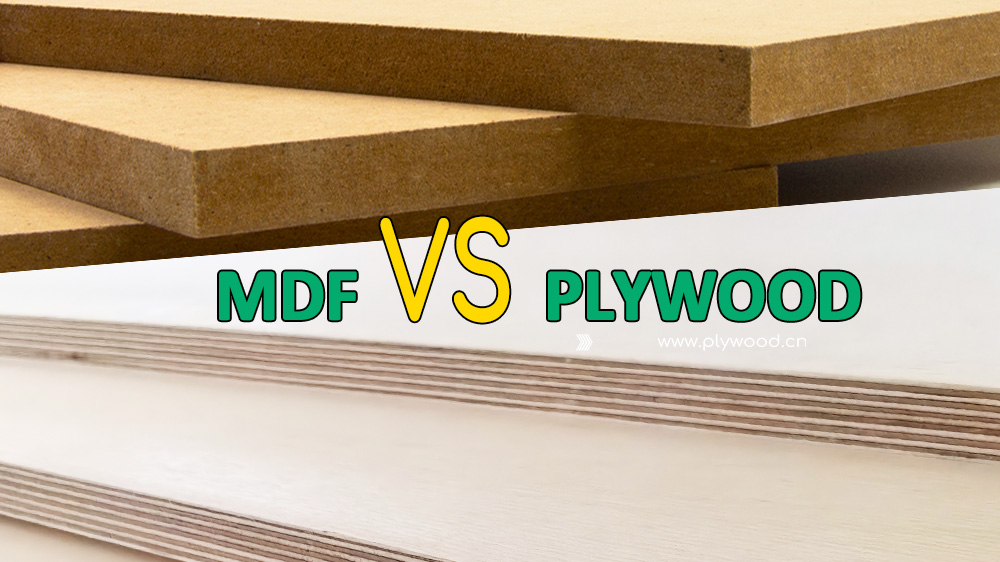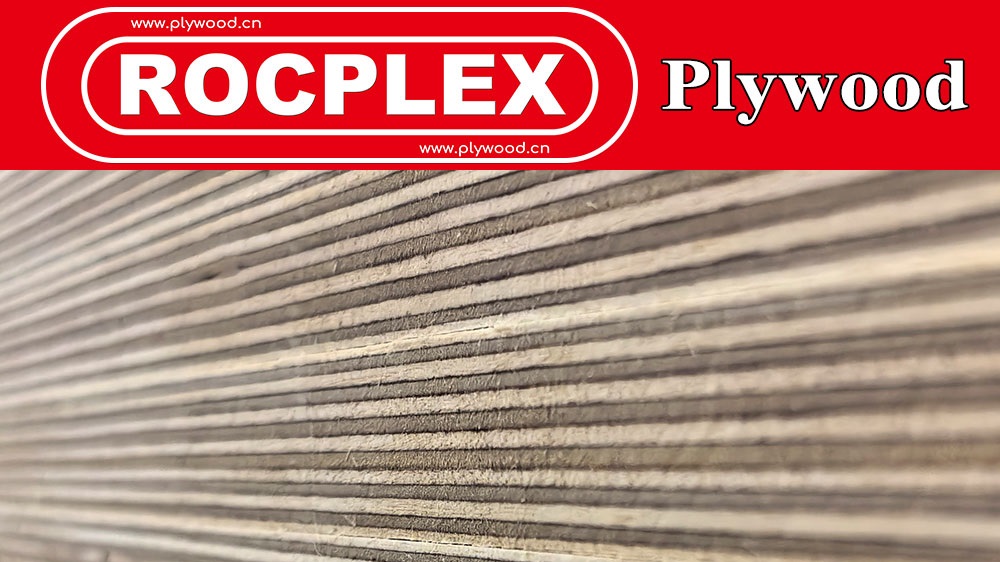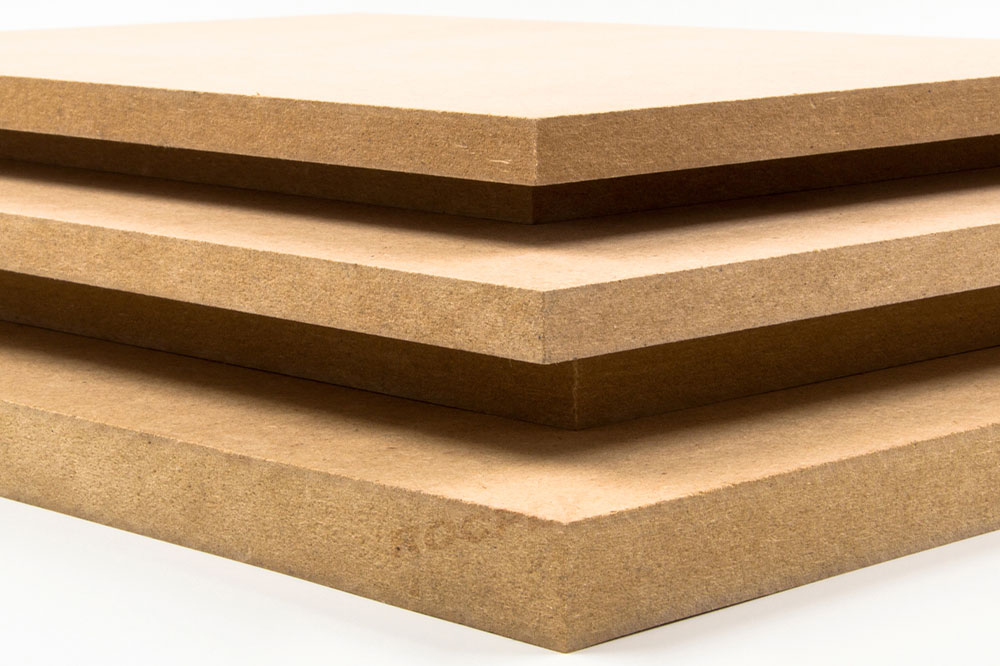MDF VS Plywood: Understanding the Core Differences
When comparing MDF VS plywood, the first noticeable difference is their construction. MDF has a homogenous structure throughout. It’s made by compressing wood fibers with resin and wax. The result is a smooth, consistent surface ideal for painting or veneering.
Plywood is layered. Each sheet has multiple wood veneers glued together, with grains running at 90-degree angles. This gives plywood excellent strength, even across wide spans.
MDF offers greater precision in cutting and shaping. Plywood delivers better load-bearing capability and dimensional stability.
Which One Is Stronger: MDF VS Plywood?
Strength is often the top concern in the MDF VS plywood debate. Plywood wins in structural strength. Its layered design resists bending and warping under pressure.
MDF, while dense, can break under high loads. It also absorbs water more easily, which may lead to swelling if not sealed properly.
That said, MDF is stronger in edge profiling and surface finishing. It cuts smoothly and holds paint without grain lines or splinters. This makes it ideal for interior use where aesthetics matter.
For flooring, roofing, and load-bearing structures, plywood is the safer choice. For decorative panels and indoor furniture, MDF offers unmatched finish quality.
MDF VS Plywood in Furniture Manufacturing
Cabinet makers often ask: MDF VS plywood, which suits high-end furniture?
MDF is ideal for painted cabinets, doors, and interior shelving. Its smoothness eliminates the need for extensive sanding. It also accepts intricate profiles and carvings with clean results.
Plywood is more suitable for carcasses and structural frames. It holds screws better, which is essential in high-stress joints.
For flat-pack furniture, MDF keeps weight and costs low. For heirloom-quality joinery, plywood offers durability and longevity.
MDF VS Plywood in Moisture and Climate Resistance
When it comes to moisture, MDF VS plywood has a clear winner. Plywood handles humidity better. Its cross-layer design resists warping and swelling.
MDF swells easily unless treated. Moisture-resistant MDF versions exist but cost more and still underperform compared to plywood in wet conditions.
For kitchens, bathrooms, and outdoor applications, plywood is preferred. For dry interior walls, partitions, and decorative trim, MDF is a reliable choice.
Cost Comparison: MDF VS Plywood
Budget is always a factor in the MDF VS plywood selection. MDF generally costs less. It’s easier to produce and uses recycled wood fibers.
Plywood, especially hardwood-faced or marine-grade types, is more expensive. Prices rise with thickness and quality of the face veneer.
But costs must be measured against performance. For applications needing strength and water resistance, plywood is worth the extra cost. For large-scale decorative panels or low-impact uses, MDF offers excellent value.
Workability Comparison: MDF VS Plywoods
Workability matters for carpenters, designers, and CNC operators.
MDF is consistent throughout. It cuts cleanly with minimal splintering. It’s excellent for CNC routing and edge detailing.
Plywood needs more attention when cutting. The grain and glue lines can cause tear-out. High-speed tools and sharp blades are essential.
Screws hold better in plywood. In MDF, pre-drilling is advised to prevent splitting. However, for laminate overlays and precision edges, MDF remains unmatched.
Appearance and Finishing: MDF VS Plywoods
Visual appeal is another key factor.
MDF has no visible grain, so it finishes uniformly with paint. It’s perfect for high-gloss and matte coatings. However, it doesn’t look natural unless veneered.
Plywood displays real wood grain. Its surface can be stained or lacquered for a premium look. For projects celebrating natural timber aesthetics, plywood leads.
For minimalistic, painted finishes—especially in modern interiors—MDF dominates. For rustic, traditional, or natural aesthetics, plywood takes the prize.
Medium-density fibreboard VS Plywood: Environmental Impact Matters
Sustainability is a growing concern. Both MDF and plywood can be eco-friendly, depending on how they are sourced and manufactured.
MDF is often made using recycled wood fibers. This reduces waste and makes use of by-products from sawmills. However, the resins used in MDF may release formaldehyde. Many manufacturers now offer low-emission or no-added formaldehyde MDF options.
Plywood, especially when made from certified sustainable timber, has a lower environmental footprint. The layers come from logs, often harvested with minimal waste. Plywood production also uses fewer adhesives compared to MDF.
For green building certifications like LEED, always choose materials that carry FSC, PEFC, or CARB Phase 2 compliance.
Medium Density Fibreboard VS Plywood: Choosing Based on Application
Every project has unique needs. Understanding those helps in choosing between MDF and plywood.
For interior cabinetry and painted furniture:
MDF offers a smooth surface, easy routing, and lower cost.
For structural panels, subfloors, and high-load areas:
Plywood provides superior strength and screw-holding capability.
For humid environments such as bathrooms or kitchens:
Plywood, particularly marine-grade or water-resistant variants, outperforms standard MDF.
For precision work in dry indoor spaces:
MDF shines with its ease of machining and fine edges.
MDF VS Plywood in the Global Market
MDF and plywood are popular in different markets for different reasons.
In North America, plywood dominates in structural applications due to strict building codes. MDF, however, is widely used in the furniture and interior design industry.
In Asia, MDF is a favorite in cost-sensitive sectors like retail shelving and prefab cabinetry. Plywood, particularly birch and hardwood-faced types, is used for decorative finishes.
In Australia and Europe, eco-certification plays a major role. Plywood with low VOC adhesives and FSC certification often wins large government and commercial contracts. MDF with low-emission ratings is also rising in demand.
Tips for Choosing the Right Material: MDF VS Plywood
Here’s a quick checklist to help buyers make informed decisions:
Budget constraints? MDF is more cost-effective.
Need strength and support? Go with plywood.
Looking for smooth, paintable surfaces? MDF is ideal.
Working in high humidity or near water? Plywood is the safer choice.
Want a natural wood grain finish? Plywood wins.
Need tight tolerances or CNC cutting? MDF performs better.
Always assess the final environment, load requirement, and finishing method before making a purchase.
Common Buyer Mistakes in MDF VS Plywood Selection
Avoid these errors:
Using standard MDF in bathrooms or laundry areas – swelling is likely.
Assuming plywood always means waterproof – only marine or WBP plywood is suitable for wet zones.
Over-relying on MDF for screw-fastened joints – unless pre-drilled and reinforced, screws may loosen over time.
Selecting based on price alone – long-term durability often justifies the extra cost of high-grade plywood.
Educated buyers know that each product excels in specific roles. The key is proper material matching.
MDF VS Plywood for Today’s Builders
The MDF VS plywood discussion isn’t about which is better universally. It’s about suitability. Each material brings its own set of benefits to the table.
MDF offers a flawless surface, easier processing, and competitive pricing. It thrives in aesthetic interior applications.
Plywood delivers unmatched strength, long-term stability, and better moisture tolerance. It shines in structural, industrial, and heavy-use environments.
For suppliers, understanding the client’s end-use scenario is essential. For builders and manufacturers, knowing when to use MDF and when to go with plywood can greatly affect product performance and longevity.
Both products are critical in modern construction and furniture making. Selecting the right one enhances quality, reduces callbacks, and builds trust in the supply chain.
Post time: Apr-28-2025




